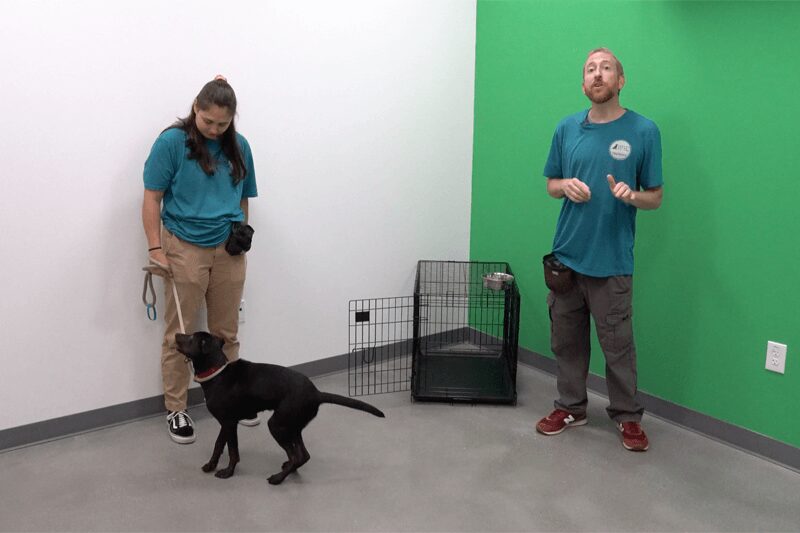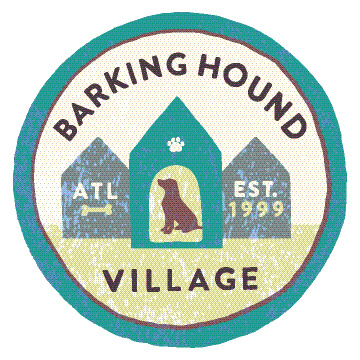We’ve partnered with Barking Hound Village to provide training resources for pet owners who need assistance. Learn more about preventing rude behavior in your dog by watching the video and reading the training guide below.

Properly introducing a crate to a new puppy can serve many important functions. A crate is a crucial part of potty training, helping new puppy parents prevent inside bathroom accidents. It can act as a safe place where a dog can retreat to when they’re fearful or nervous, like during fireworks, a thunderstorm, or when a few particularly loud friends are over. A crate can help prevent puppy chewing, saving your couch and loafers. And it can also act as a happy place where energetic puppies learn to calm down and settle.
Start by choosing an ideal spot in your home for the crate. It should be away from the action, not in the center of the living room. Keep in mind that dogs prefer a wall to a window. They don’t want a view, they want security. It can also be helpful to set up a noise machine or speaker nearby to play calming music when you need to cover up external sounds, like the aforementioned fireworks, thunder, or boisterous friends.
When you first introduce your dog to the crate, make it magic! Put some treats in the crate when your dog is not around and then bring them over to let them explore. When your dog discovers the treats in the crate, they’ll think they magically appeared and associate the fun with the crate!
Try feeding your dog in the crate. If they’re still a little wary, put the food just inside the door so your dog only has to stick their head in to eat. Over time, slowly move the food to the back of the crate and, eventually, close the door while they eat.
Practice short, happy crate experiences. Put your dog in the crate and give them a safe, yummy, and long-lasting distraction like a frozen Kong toy with peanut butter. After a few minutes, BEFORE they’re finished with the distraction, open the crate door and give them the option to come out if they want. Your goal is for the entire experience to be a positive one, from going in and closing the door to opening it again.
If you want to teach your dog a verbal cue to go in the crate, gently hold their collar and toss a few treats in the crate. Say your verbal cue and then let go, allowing them to go in and get the treats. For at least the first few weeks, you should ALWAYS give your dog a treat for going into the crate.
Keep in mind that well-exercised and tired dogs will take to the crate better than those full of energy. When you’re building the time your dog stays in the crate, make sure to take them for a nice long walk beforehand or play with them to get some of their energy out.
Finally, if your dog is really fearful of the crate, they may have crate anxiety. If the above tips don’t alleviate the anxiety, it’s important to enlist the services of a qualified trainer to help modify a training program for your specific dog. Check out Barking Hound Village for more information, or contact them at (404)-369-2014 or training@barkinghoundvillage.com to set up a session!

